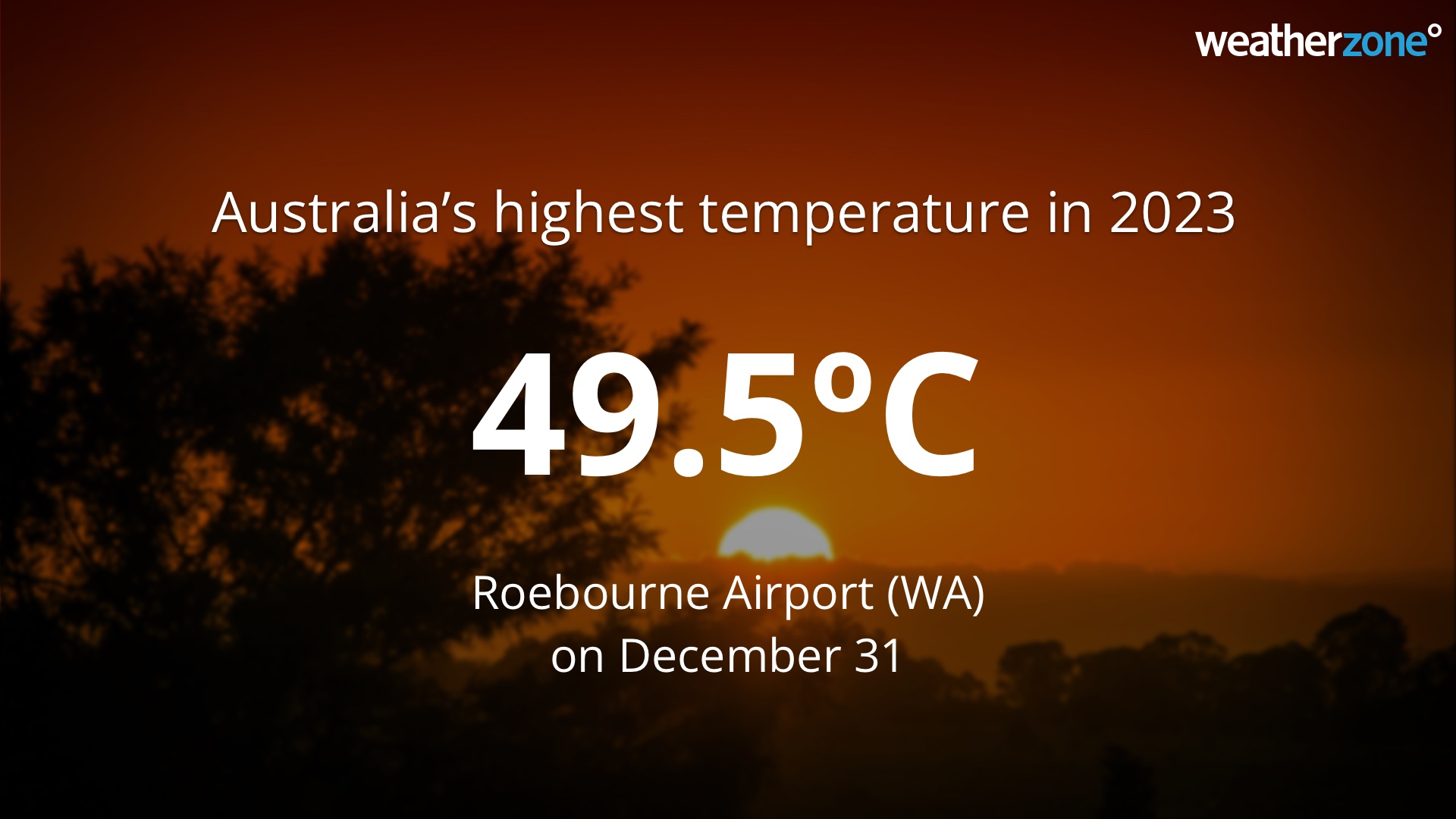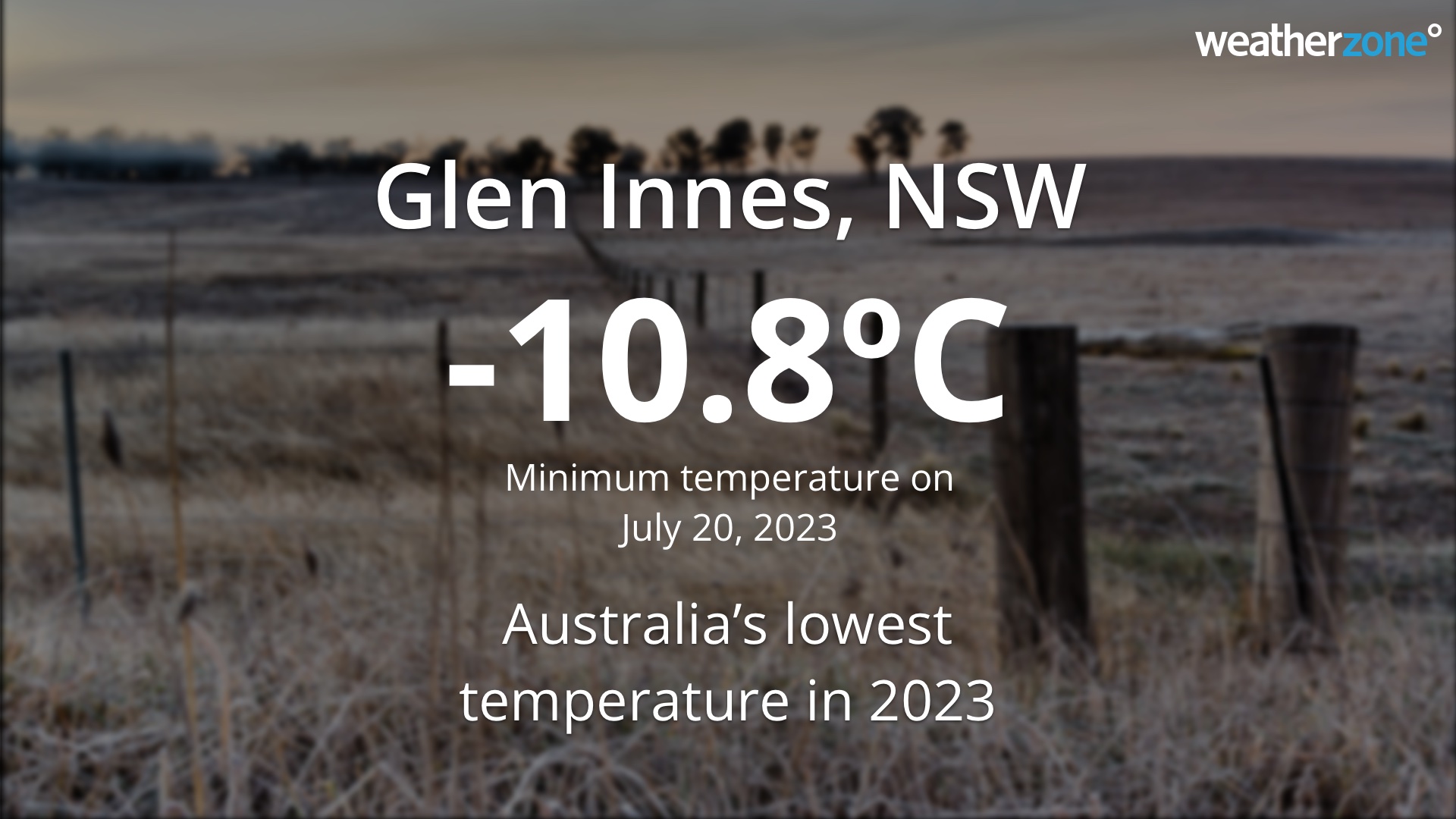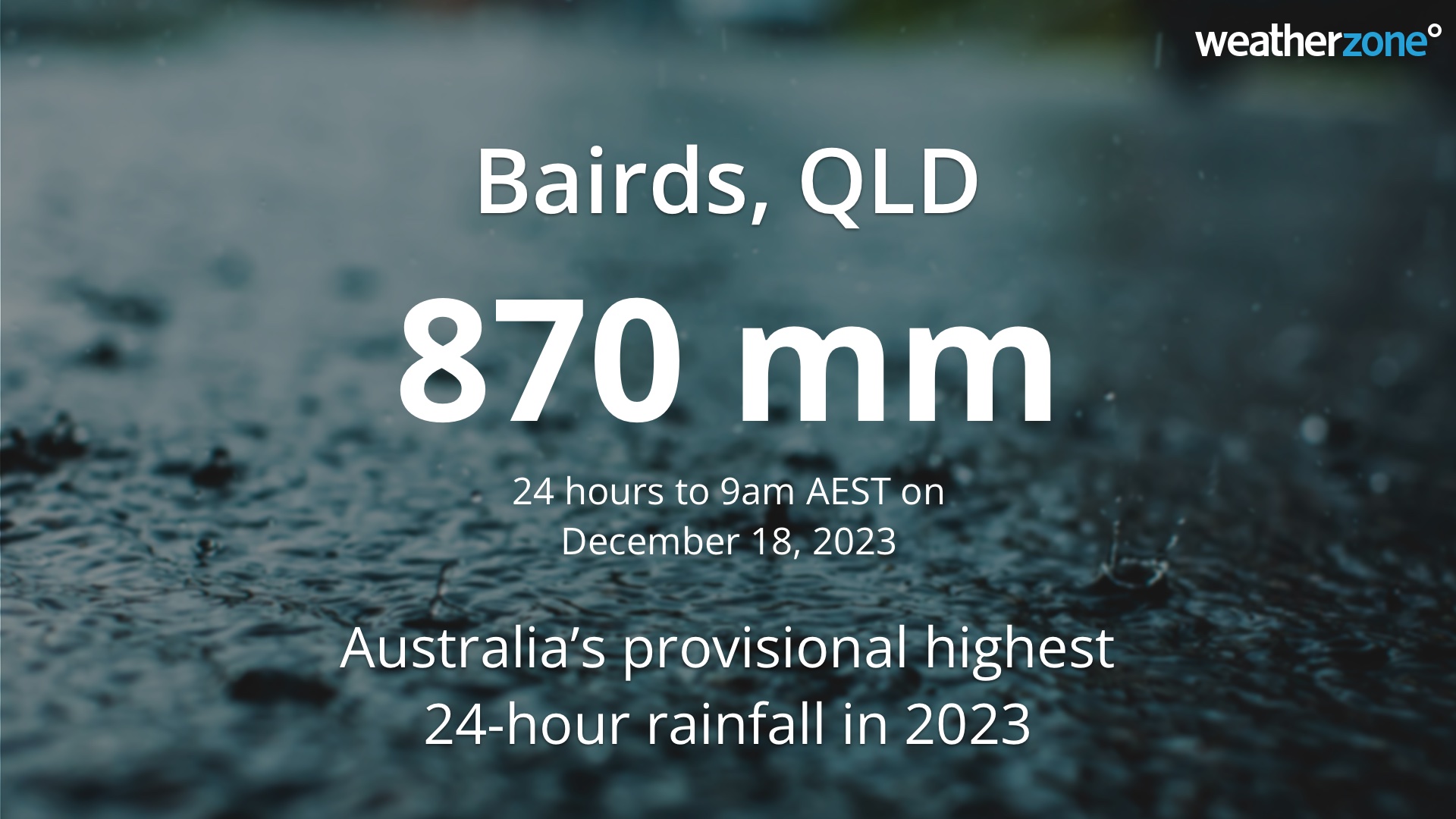Where were Australia's weather extremes in 2023?
This year started with La Niña and ended with EL Niño, creating a perfect recipe for extreme weather in Australia. So, where were the hottest, coldest and wettest places in the country during 2023?
Hottest
Every year features some severe heat in Australia and 2023 was no exception. While Australia’s maximum temperature record of 50.7ºC was not challenged this year, six places managed to exceed 47ºC.
The highest temperature in Australia during 2023 was 49.5ºC at Roebourne Airport on December 31. This was followed by 49.3ºC at Onslow Airport on January 14 and Marble Bar on December 30, then 47.9ºC at Ironbridge Airport and 47.2ºC at Winton Airport both on December 30, 47.1ºC at Roebourne on January 1 and 47.0ºC at Emu Creek Station on January 14.
Impressively, the 49.5ºC at Roebourne on the final day of the year was the highest temperature observed in the Southern Hemisphere during 2023.

Coldest
At the other end of the scale, temperatures reached teeth-chattering lows during the depths of winter in 2023.
Once again, the national cold record of -23ºC was not in any danger this year, with nowhere in the country even getting below -11ºC.
The coldest place in Australia during 2023 was Glen Innes in NSW, which registered a minimum temperature of -10.8C on July 20. The next coldest place in the country was -10.1C at Perisher Valley on June 21, followed by -9.8C at Cooma also on June 21.

Wettest
The year ended with some exceptionally heavy rainfall over northern Qld due to Tropical Cyclone Jasper.
While the highest daily rainfall totals from this event will take some time to be validated, a rain gauge at Bairds registered 870 mm and another at Diwan reported 829 mm during the 24 hours ending at 9am AEST on December 18. If these are formally confirmed by the Bureau of Meteorology, they will be the 3rd and 4th highest observed daily rain totals on record in Australia, behind 878.3 mm at Finch Hatton in 1958 and 907 mm at Crohamhurst in 1893.

It’s also worth noting that 2023 is on track to being Earth’s warmest year on record.